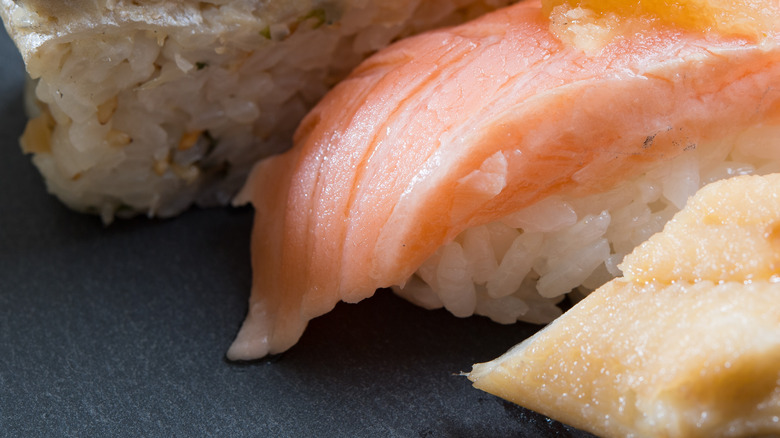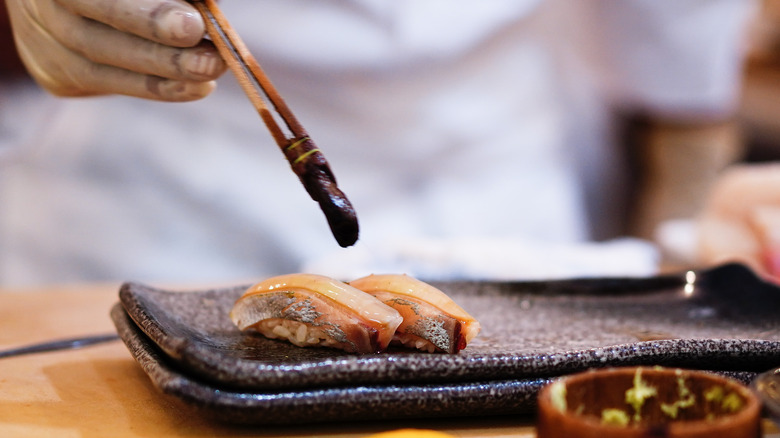Sujime, The Marinating Technique Used To Make Fish Bones Edible
A sushi chef hands you a shimmering piece of saba (aka mackerel) nigiri at a sushi restaurant. Glistening within the soft, tight flesh, a scattering of delicate bones piques your interest. Hesitant yet driven by curiosity, you take a bite. To your surprise, the tiny bones are far from an unwelcome interruption; they're soft and edible and don't detract from the tang and butteriness of the mackerel. This bone-softening magic is courtesy of sujime, a Japanese marinating technique that renders small fish bones edible.
Sujime is not a new technique but a longtime cooking method invented in the 1800s as a preservation method used with edomae sushi, which is made with aged and marinated fish. The useful vinegar marination method is still well-practiced among sushi chefs specializing in edomae sushi. That being said, it is not as simple as combining fish and vinegar. It requires many steps and often takes years of practice to master.
Sujime uses salt and vinegar to render small fish bones edible
First, chefs wash blue-back fish, like horse mackerel or gizzard shad. Then, they remove larger bones while leaving the smaller ones undisturbed. Then, cooks add salt to the fish, which helps to firm up the soft flesh. After salting the fish, it's washed again before getting soaked in vinegar.
The level of acidity and temperature of the vinegar are both usually left to the sushi chef's experience and discretion, as per Sushi University. It's an involved process as the chef must temper the acidity of the vinegar by adding the right water ratio, while also considering the vinegar's temperature. The vinegar works its magic, and soon, all the residual small bones start to soften to the point where they become edible. Following the sujime process, the fish emerges enhanced with a locked-in umami taste and an improved texture, ready to be celebrated in various sushi and sashimi dishes.
Sujime-prepared fish are often standout sushi dishes
From sushi to sashimi, sujime-prepared fish takes center stage and is found in the West in high-end sushi restaurants and omakase experiences. A common dish is kohada or gizzard shad, a fish characterized by its small, delicate bones and often unpleasant fishiness. Sujime transforms it in a way no other preparation methods can. You could boil it, but that won't soften its bones. Try grilling it, and you'll be hit with an unpleasant odor. When served as delicious sashimi or used as a sushi topping, gizzard shad must first go through the sujime process.
Another star of the sujime technique is aji or horse mackerel. When prepped with the sujime technique, it is referred to as shime saba. According to sushi aficionados, marinating mackerel in vinegar mellows its strong fishy flavors, often making it a surprising standout dish during sushi omakase experiences.
These days, sujime has journeyed far beyond its native Japanese shores. As an appreciation for this difficult-to-master technique grows, we expect more restaurants worldwide will showcase sujime-prepared fish, allowing more people to delight in the unique sensation of edible fish bones.


